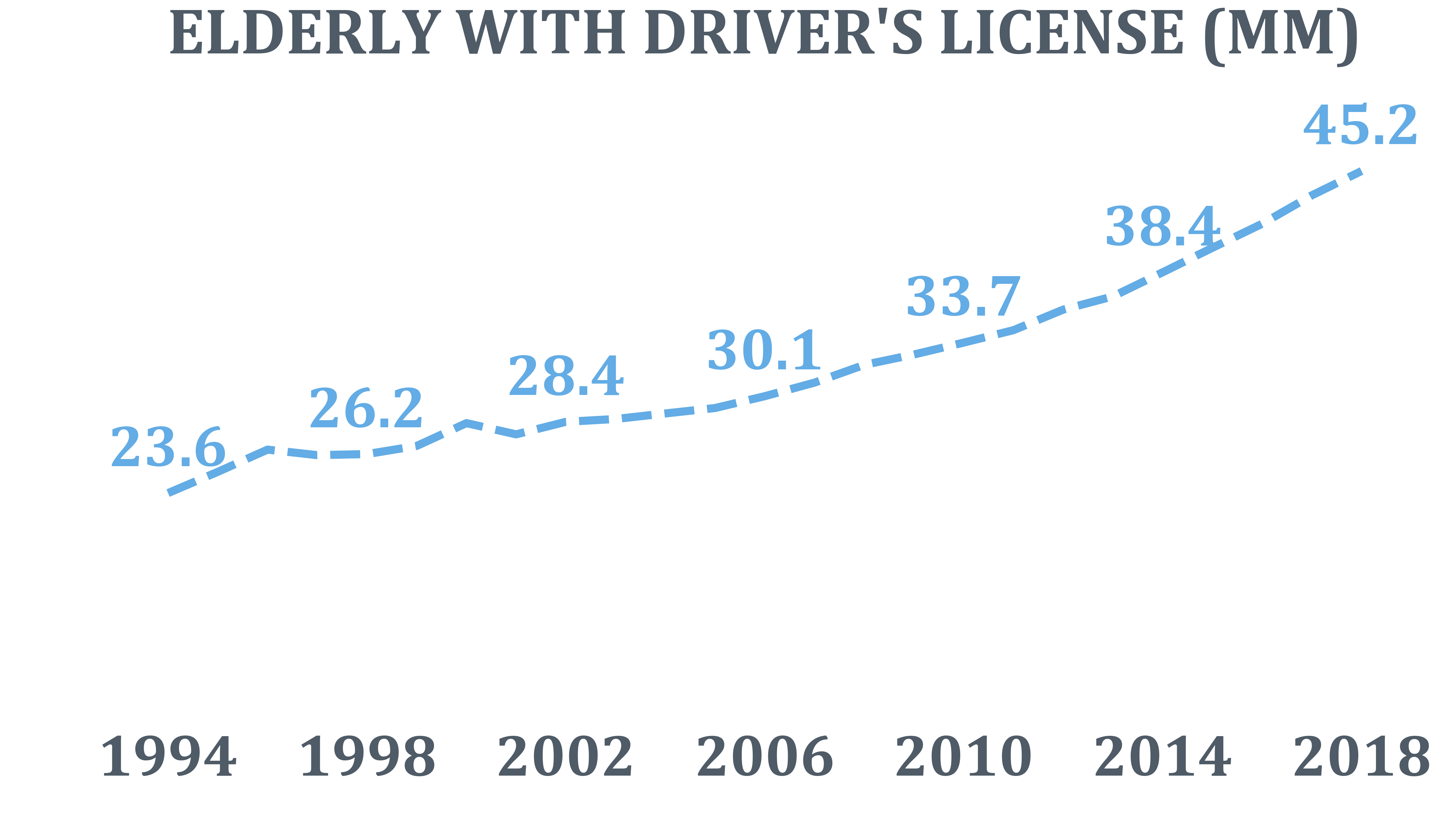“It was the car's fault.”
“You backed the car into the Pollacks' yard.”
“You should have let me keep my LaSalle. It wouldn't have behaved this way.”
“Mama, cars don't behave. They are behaved upon. You demolished that Chrysler by yourself.”

And so are the lines from Driving Miss Daisy, a story set in the late 1940’s, where Daisy struggles with her waning independence as she ages. When she crashes her car, her son organizes a chauffeur—an arrangement that she does not (at least initially) embrace. Viewed from today, the story tells us that the topic of when someone should stop driving—for reasons of personal safety or the safety of others or of things—is not new. Maybe Daisy’s son had it right—driving is not strictly about age, but more about health.
Whatever the reason for considering an elderly person’s ability to drive, the topic is becoming more prevalent. The population of people 65 years or older (“elderly”) has grown faster than other age cohorts over the last ten years, increasing by nearly 40%. It is expected to grow from 55 million in 2020 to 81 million in 2040. And, these seniors are keeping driver’s licenses longer and driving more miles than before. In 2018, 45 million elderly held a driver’s license, comprising nearly 20% of total drivers. From 2008 to 2018, the number of elderly drivers increased by 40%, nearly double the growth rate from 1998 to 2008. There is a real need supporting these numbers, as the elderly predominately live in suburban or rural areas, where there are few alternatives to private automobile transport. Before the coronavirus pandemic, elderly people primarily drove for shopping, reaching social engagements, or attending religious functions.


Unfortunately, the fatality rates of the elderly are higher than other age brackets, particularly in the 70 years and older categories. Approximately 7,700 adults aged 65+ were killed in traffic crashes (accounting for nearly 20% of all traffic fatalities), and more than 250,000 were treated in emergency rooms for crash injuries in 2018. Except for teen drivers, seniors have the highest crash death rate per mile driven, even though they drive fewer miles.
In part, these higher injury and fatality rates are due to medical complications, arising from typical health vulnerabilities of older people, following a vehicle accident. Because older drivers are more fragile, their fatality rates are 17-times higher than those in 25- to 64-year-old bracket.
There at least three anatomical functions which deteriorate with age and impact our ability to operate a vehicle: vision, cognition (including memory and attention), and motor function. And these natural physical impairments can be exacerbated after having taken medications. They can lead to the common errors by elderly involved in crashes, which include failing to yield the right-of-way, or failing to properly survey the situation, such as other vehicle speeds or the gap length between vehicles.
A caregiver’s consideration of a loved one’s ability to drive is important, because regulations related to it are inconsistent from state-to-state. Only twenty-one states require older drivers to renew their drivers licenses more frequently than the rest of the driving population. Eighteen states require more frequent vision tests for older motorists. Sixteen states prohibit older drivers from renewing licenses by mail or online.
For help regarding your situation, the National Highway Traffic Safety Administration (NHTSA) has developed self-assessment tools: Driving Safely While Aging Gracefully and Understanding Older Drivers. For a loved one who still drives, NHTSA recommends some actions to help increase safety.
- Review medications for specific notes about driving risk.
- Review recency of eye exams or update glasses prescription, to ensure that traffic signs be read accurately.
- Review recency of a hearing test.
- Assess if muscle pain or stiffness affects vehicle operability or control.
- Assess if driving makes your loved one feel nervous, scared overwhelmed.
- Determine if your loved can one react when encountering a detour without getting lost.
If driving is a necessity…
- Strive to limit it at dusk and at night, and during sunrise.
- Consider hand controls for both the gas and brake pedals if there are leg problems.
- Practice ensuring adequate space between vehicles.
- Avoid heavy traffic areas or rush-hour driving when you can.
- Avoid fast-moving roads or lanes.
When talking about the risks of driving, the National Institute on Aging recommends focusing on skills and not age and being prepared to offer an alternative to meeting the transportation needs.
If only all of us could be as fortunate as Daisy, to be chauffeured during in our senior years.

